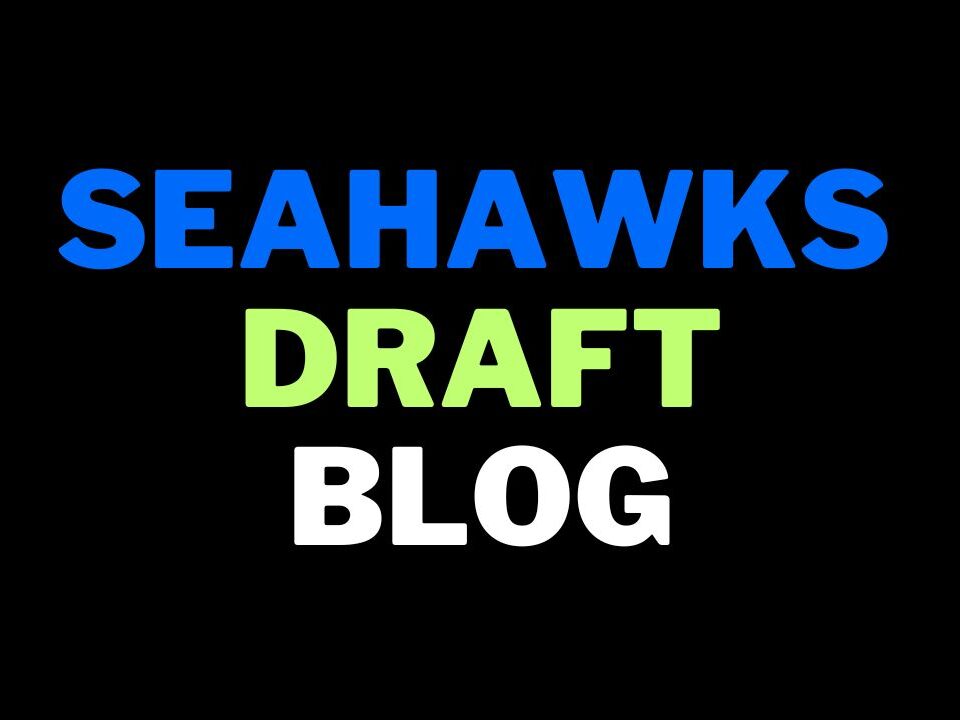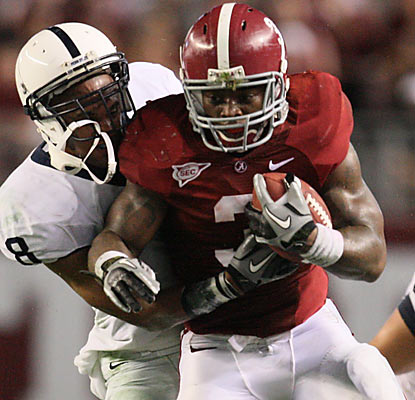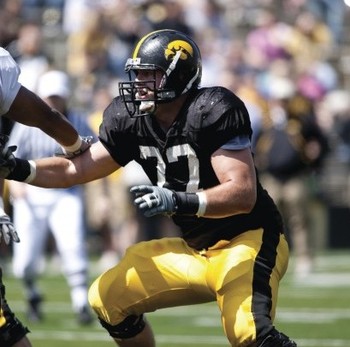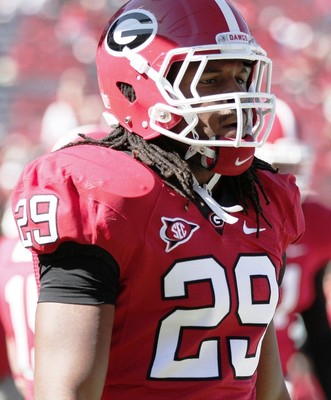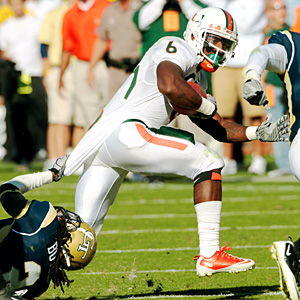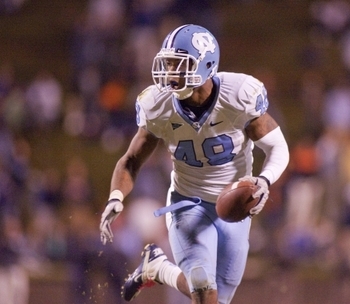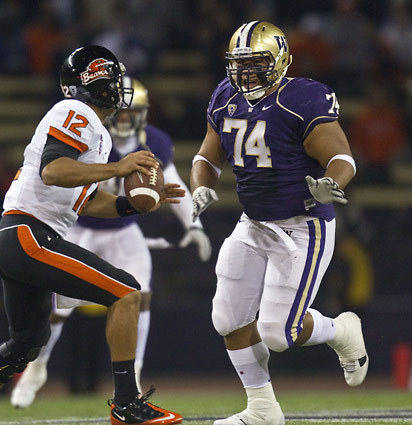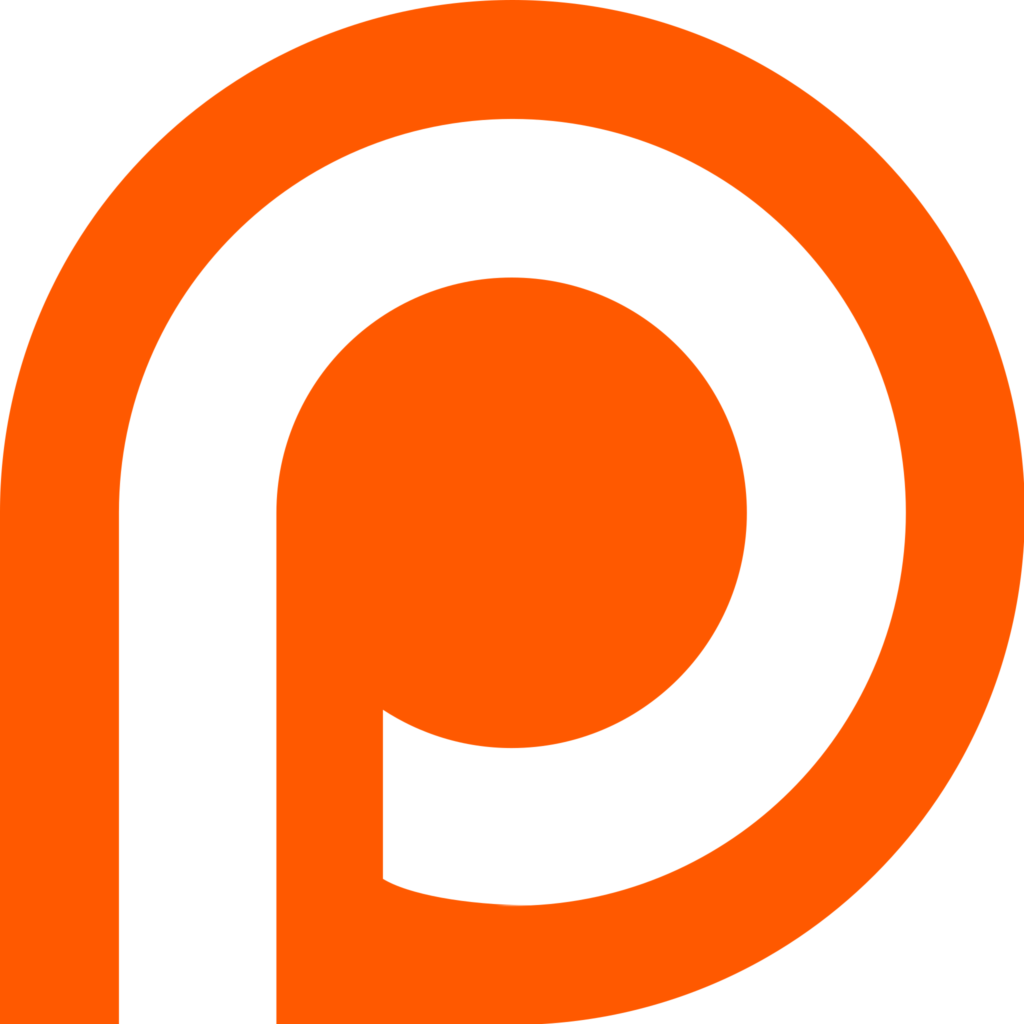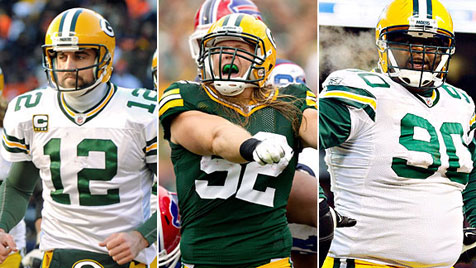
Posted by Kip Earlywine
(Note: Be sure to scroll down and check out Rob’s recent entry on Matt Barkley. The Oregon game may well prove to be a turning point for Barkley’s draft status.)
The apparent beginnings of a second half surge by the Seattle Seahawks has ignited the “lose to win” debate among fans (which in my imagination, is sung to the tune of Paul Stanley’s “Live to win“). Its a topic that in the past was shied away from and avoided, but in 2011 its taken off to a level I’ve never seen before. Even radio personalities like Mike Salk have openly advocated for losing games for draft position. For some reason, perhaps fueled by the long overdue acceptance of moving beyond Matt Hasselbeck, the nearly undeniable requirement for a franchise quarterback to make the playoffs and the well documented success-rate of first round quarterbacks, the subject has ceased to be completely taboo. I’m guessing a lot of fans were looking at Andrew Luck after getting crushed by Pittsburgh for an 0-2 start and thought, “if we’re going to be bad, lets be bad enough.”
Despite that, the subject does bring out a lot of heated emotions on both sides. Even on this very blog we’ve seen some heated discussion in the comments regarding this. So I figured it was high time I weighed in, to explain that there’s really no reason to freak out either way. At least not this year.
Depending on the season and the context involved, I’ve actually been on both sides of this issue in the past. I thought that Seattle gained more by winning in 2002 when a hot finish not only helped Matt Hasselbeck establish himself as a franchise quarterback, but also helped Mike Holmgren keep his job. Without that late 2002 surge, I very much doubt the Seahawks would have been celebrating their first Superbowl berth in 2005. Conversely, when it was obvious that the team was in need of a complete roster overhaul and change at the top in 2009, I felt that losing to secure that change, as well as needed draft position (to assist in finding a quarterback) was clearly more important. Seattle did not draft a quarterback the next draft (2010), and I think its safe to say that though frustrating at the time, it was absolutely the right move in retrospect. Instead, Seattle stayed calm and simply selected the best players they could, and though they didn’t get a franchise quarterback (who didn’t exist in that draft anyway), they did acquire two players who are already pieces of Seattle’s next great team.
So which is it in 2011? This season doesn’t really fit well with either of those examples: Seattle does not have a true emerging franchise quarterback as they did in 2002, nor are they a team trending downward and in need of new leadership. But if we made a spectrum with 2002 being on one side and 2009 being on the other, I think I’d lean towards putting this season on the 2002 (“winning is good”) half. And not for the reasons many “win now” supporters have suggested.
Rather, while looking ahead to the next NFL draft, one can’t help but notice that this isn’t going to be a top heavy draft. I don’t know if there is a single player on defense that truly deserves to be a top 10 pick. The offensive portion of the draft is actually pretty dang good, but its also a muddled group. Andrew Luck is the consensus top quarterback, and Trent Richardson (if he declares) will be the top rated running back, but after that expect a lot of different front offices ranking the remaining players in a variety of orders. Its very possible that with time, the quarterback class could solidify into a consensus order, but with Jones being rated highly, Barkley lower than he deserves, and Griffin’s stock being difficult to predict, the early indications hint at what could become an unpredictable remaining quarterback class not unlike 2011’s. Additionally, you are looking at probably four or five offensive lineman going in round one (Kalil, Martin, Konz, and DeCastro are locks.) Similarly, there are about four to six wide receivers who could merit first round consideration. At running back, Lamar Miller will likely be a first rounder, and Chris Polk could end up sneaking into the first round as well. I wouldn’t rule out LaMichael James either.
In other words, there are going to be three or four superstars in this draft, and its likely they will all quickly be gone in the first five or so picks. But after that, the draft widens out considerably. To help illustrate this idea, I’m going to use this basic diagram:

The dark blue area represents players who are uncommon talents. In 2012, this group is expected to include Andrew Luck, Matt Kalil, Trent Richardson, and Matt Barkley (whether his reputation is there or not). Richardson has indicated recently that he leans toward returning to school next year, and though I do not think Barkley will return to USC, some believe that Barkley may return as well. Split the difference, and you are probably looking at only 2 to 4 elite players in this next draft. That’s not an especially low number, but its dwarfed by the number of Upper Tier players that follows it, a list that probably goes fifteen strong on offense alone, and since teams don’t pick purely by BPA, you can expect some of those 15 players to last to the end of the first round. And while this draft completely lacks top 10 worthy prospects on defense, there are quite a few defensive players who could make a lot of sense from the mid-first round on, players like Zach Brown, Alameda Ta’amu, Vinny Curry or Janoris Jenkins. It paints the picture of a draft that falls off quickly at the very beginning, but turns into a gradual plateau for a long time after.
Generally speaking, as you move down the pyramid, each sub-group increases in size and opinion increasingly lacks consensus. By the time you reach the 4th tier, its really anyone’s guess who goes where, and its no surprise then that the very best front offices separate themselves the most in this area. And in 2012, you’re looking at a pyramid that has very little dark blue, but a lot of regular blue and light blue. That’s true with every draft, but its more true with 2012’s group than most.
Where have we seen this before? Though not perfectly analogous, we’ve seen similarly “dispersed” drafts recently in 2005 and 2009.
Top 10 picks, 2005: Alex Smith, Ronnie Brown, Braylon Edwards, Cedric Benson, Cadillac Williams, Pac-Man Jones, Troy Williamson, Antrel Rolle, Carlos Rodgers, Mike Willams (the very same).
In a word, brutal. But consider some notables from the remainder of that same first round:
Notable picks 11-32, 2005: DeMarcus Ware, Shawne Merriman, Jammal Brown, Marcus Spears, Aaron Rodgers, Jason Campbell, Roddy White, Heath Miller, Logan Mankins.
Its worth noting that while Ware, Merriman and Brown went 11th, 12th and 13th respectively, the rest of those players were drafted 20th or later. Of course, Seattle drafted Chris Spencer 26th overall in that same draft. Though not a home run pick, it ended up being the best first round pick Tim Ruskell would ever make. Now lets take a look at another dispersed year: 2009.
Top 10 picks, 2009: Matt Stafford, Jason Smith, Tyson Jackson, Aaron Curry, Mark Sanchez, Andre Smith, Darrius Heyward-Bey, Eugene Monroe, B.J. Raji, Michael Crabtree.
Yet again, another incredibly weak top field. Matt Stafford’s career is turning out the way you would hope any #1 overall quarterback would, but after that you have four players in a row who were late draft risers, and all four are picks their teams have regretted or will probably regret in the future. Sanchez isn’t quite a disappointment just yet, as he’s improved every season and is currently sporting an 80 passer rating, but he hasn’t progressed nearly as fast as Stafford despite having almost double the playing time to this point. Andre Smith, DHB, and Eugene Monroe had terrible beginnings to their careers, and while I wouldn’t rule out a turnaround, I think its safe to say they haven’t been earning their $40 million contracts. B.J. Raji has been one of the most valuable DTs in the league, chosen by a team that knows a thing or two about evaluating talent. Michael Crabtree has actually been a pretty solid receiver, just not the superstar many thought he’d be. Overall though, you’re looking at two great players and two decent players in a top 10 crop. Consider now how the rest of round one shaped up that year:
Notable picks 11-32, 2009: Brian Orakpo, Malcolm Jenkins, Brian Cushing, Josh Freeman, Jeremy Maclin, Brandon Pettigrew, Alex Mack, Percy Harvin, Michael Oher, Clay Matthews, Eric Wood, Hakeem Nicks, Kenny Britt.
That list already includes 5 pro-bowlers and a franchise quarterback, among other things. And while I think BJ Raji and Matt Stafford are currently on their way to the pro-bowl themselves, the top 10 group has yet to earn a single pro-bowl bid as of this writing.
I guess a logical question when seeing such unusual results is “how could NFL franchises picking in the top 10 let this happen?” Well, its partly because the higher a team picks, the smaller their section of the pyramid is, and the more “locked in” they get. Remember that these were not top-heavy years, and determining the top crust of talent became more of a case of guesswork than usual. It probably also factors that many of the successful players from these lists landed on good teams who were able to put those players in a good place to succeed. It didn’t hurt that Michael Oher went to a team that had previously invested heavily in the offensive line, and had both a franchise quarterback and franchise running back to make him look better. It didn’t hurt BJ Raji or Clay Matthews that they went to a great team coming off a strange down year.
And as the picture at the top implies, its hard to not notice just how incredibly well Green Bay did in these two “weak” drafts, securing one of the greatest quarterbacks in NFL history, an elite nose tackle and an elite pass rusher. And they did so while John Schneider was a member of their front office, using a system he brought over with him when hired as the Seahawks general manager. While Rodgers was gained through patience and luck, and Raji was gained by staying true to their board, Clay Matthews actually required a highly uncharacteristic trade up to acquire.
Could a 1st round trade up be in the books for John Schneider in 2012? If the season were to end today, the Colts would likely take/trade Luck at #1. But after that, you have three teams in a row who have invested in quarterbacks recently (Panthers, Vikings, Rams). If Richardson opts not to declare, that leaves only Matt Barkley and Matt Kalil as the remaining elite prospects. In a draft where the talent pool at say the 3rd overall pick won’t be radically different from the talent pool in the mid-first, that creates a massive incentive to trade down, even with the new rookie wage scale. And of course, after Barkley and Griffin are both off the table, you are looking at a flat-out buyers market year, where trading down will be hard to do and trading up will probably cost less than usual. We know that John Schneider loves to move down, but its just not going to be easy to do that this time. In 2005 and 2009, there was only one top 10 trade in those two drafts combined. That one top ten trade was of course for Mark Sanchez, which may not have materialized if not for then Browns coach Eric Mangini’s connections to the Jets. A friendly rookie pay scale will help entice buyers to a degree, but why would any team spend significant capital to draft from essentially the same talent pool? Unless its for a quarterback.
In that sense, there could be an ironic advantage to picking later and targeting a quarterback. The Atlanta Falcons paid a king’s ransom for Julio Jones, but there is something to like about the fact that they controlled their own destiny. They got their man. Had they picked 10th, they might have been tempted to wait it out- and miss out- as a result. As things are shaping up now, you will likely have teams in the top 5 picks holding Barkley and Griffin out for trade. I’d rather pay two firsts and get Barkley for sure than take a 50/50 shot at getting Barkley for half that price. If Seattle ends up picking 8th, that will be a very real temptation.
Great front offices work tirelessly so that they will always make the best decisions possible with the available players at each draft pick. But that hard work and success does not lure them into an arrogant mentality where they believe hard work alone will always bring a needed piece of the puzzle to their doorstep. When there is a piece out there that is critical to the equation, they’ve shown a willingness to make a bold move for that player, even in the case of Green Bay: a team that is famous for singing the praises of trading down, not up.
Finally, its worth nothing that as unlikely as it would have seemed at the time, the 2005 and 2009 drafts produced franchise quarterbacks after the top of the first round. Aaron Rodgers somehow fell all the way to the 24th pick. Jason Campbell isn’t a franchise quarterback, but he’s no slouch either. He went with the very next pick. Josh Freeman was the 17th overall pick in 2009. What if Matt Barkley suffers from Jimmy Clausen lookalike-itis and has an inexplicable Aaron Rodgers fall? What if Robert Griffin makes a dramatic rise into the first round, but not the high first round, as Josh Freeman did? While I strongly advocate Seattle taking their fate into their own hands this next draft by moving up, if they foolishly choose not to, there is legitimate hope that they could luck out anyway. And even in the worst case scenario- no worthy quarterback reaches Seattle’s first pick- we can take comfort in the knowledge that Seattle will at least be getting a pretty good player thanks to a deep second tier of talent, even if that player isn’t playing the position we want the most.
This isn’t to say that its always better to pick later. That’s hardly the case. In many drafts, such as the 2010 version, picking twice in the first fourteen picks was a huge blessing. However, the way that the 2012 draft appears to be shaping up, this looks like a year where there are significant silver linings to picking a little bit later, enough to legitimately question if it makes it worth the losing and the resulting hot seat it would put our coach and front office on.
